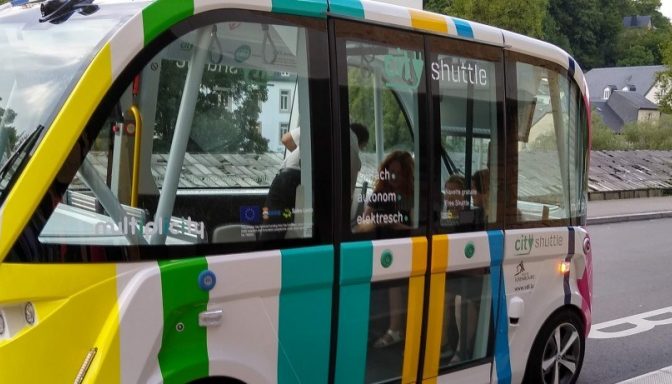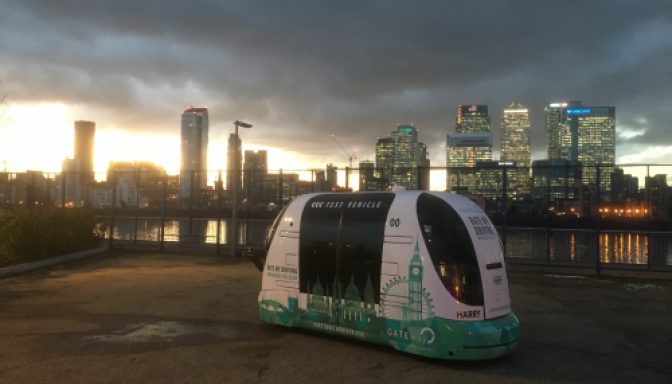Navigating a bus through a crowded urban area is no easy task. It involves negotiating a variety of complex driving situations: limited space, congested traffic, parked cars, traffic lights, cyclists weaving in and out and walkers, some distracted by their mobile phones, all while managing passengers boarding and alighting the bus and taking fares and worrying about the safety of both those on board and pedestrians on the road.
Last year, there were 32,567 road casualties in London, with pedestrians and cyclists accounting for 34.3% of these (11,173, of which, sadly 83 deaths) and bus or coach occupants accounting for 5.4% (1,752, 2 deaths).
Statistics like these have led the Mayor’s office to prioritise road safety. For example the Mayor’s Transport Strategy has the aggressive goal of reaching Vision Zero for London buses (“for no one to be killed in or by a London bus”) by 2030. One of the measures implemented is the Bus Safety Innovation Fund, a new scheme to encourage bus operators and their staff to develop and implement proposals for improving safety and/or safety culture. With funding from Transport for London, this scheme is designed to complement the existing Bus Safety Programme but to look at ideas and issues beyond the Bus Safety Programme’s scope.
In 2017, Abellio, one of London’s bus operators, which constantly looks for ways to improve safety, began looking at how it could give its drivers further assistance on the busy London roads. After a thorough evaluation process and, more importantly, obtaining drivers’ union buy-in for the project from its earliest stages, Abellio chose Mobileye collision avoidance technology, with the expectation that the technology would lead to a reduction in collisions with pedestrians and cyclists, as well as a reduction in the number of forward rear-end shunts. Mobileye’s technology comes in the form of a retrofit collision avoidance system including multiple life-saving alerts.
From Idea to Implementation
Abellio presented its proposed collision avoidance technology to Transport for London (TfL) in its bid for funding from the Bus Safety Innovation Fund; winning bids were announced in November 2017. Together, Mobileye and Abellio then prepared a detailed project plan for approval by TfL.
Mobileye made various adaptations to its technology for London driving. For example, speed limits in London are set at 20mph on many streets, which is lower than the standard 30mph limit common in other urban areas across the UK. As London buses are rarely able to reach a speed in excess of 20mph, neither the Headway Monitoring and Warning nor the Lane Departure Warning would have been operational (their minimum activation speed is set by default at a higher speed). But after thorough road testing, Abellio was very keen to see these alerts in use, particularly the Headway Monitoring and Warning. Abellio felt that assisting its drivers to keep a safe following distance, even at speeds of 15-20mph, would have a real impact on reducing urban forward rear-end collisions. So Mobileye made this bespoke adaptation.
Getting Buy-In from other Players
No less important than the technical issues themselves, was the early involvement and training of the drivers’ union and the drivers themselves. The driver’s union were told about the proposed Mobileye trial from the very early stages of the project and this was critical to a smooth and driver-supported roll-out.
Abellio wanted to stress to its experienced drivers that the technology was being implemented not because they were bad drivers, but simply because distraction is something all drivers experience, especially those facing the daily challenges of urban driving mentioned above. Having a sophisticated collision avoidance system on board would probably help any driver, but would certainly help those who have to navigate the busy streets of London. Indeed, a 2015 study by the US National Highway Traffic Safety Administration found that, as to the years it looked at, around 94% of US accidents were caused by human error; presumably this figure includes both ‘good’ and ‘bad’ drivers !
Introducing the drivers to the new technology and getting them familiar with it were crucial for the success of the project, as was continuing good employee communication and training.
Seeing Results
Mobileye was installed in almost ten percent of Abellio’s London bus fleet, operating on three bus routes.
The trial’s findings to date (the trial is ongoing) show a reduction in avoidable collisions of 29 percent and a reduction in on-board injuries from avoidable collisions of 60 percent. (‘Avoidable collisions’ are those, in prevention of which the Mobileye technology is designed to assist, e.g. the vehicle rear-ending the vehicle in front and not the vehicle being rear-ended by the vehicle behind it.)
The reduction in on-board injuries may be attributable to the Headway Monitoring and Warning alerts. By encouraging drivers to keep a safe distance from the vehicle ahead, it also reduces harsh braking. It may also be attributable to the fact that those collisions which still take place are less severe, e.g. they occur at lower speeds.
As cities are figuring out what to do with increasing congestion and how to make their infrastructure and roadways safer, adding collision avoidance technology to vehicles already on the road is one way to improve safety right now; protecting drivers, passengers and other road users, and ultimately helping to save lives.
Jeremy Coleman
UK Director for the Aftermarket Division of Mobileye


